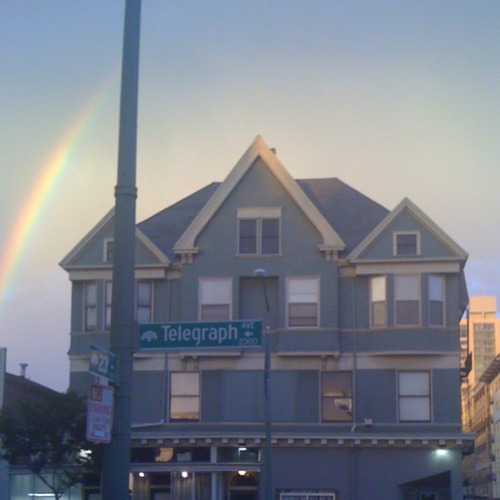Sometimes we can find big ideas already at work in other cities.
Right now, in New Orleans, in areas laid waste to by Hurricane Katrina, people are building modern, creative, architecturally innovative houses. Some are being built in places that have been completely leveled. Others are being built alongside the surviving historic "shotgun" style houses that are icons of New Orleans.
I don't know if New Orleans had restrictive design guidelines like Oakland's before the storm, but if they did, they're gone now. Necessity won out. The result is that talented architects have descended upon the city with dreams and determination to build, to build new designs, to be bold, to show off.
It helps that people like Brad Pitt have been donating large sums to the reconstruction effort. Defiance in the face of calamity is also a hell of a motivator. These are factors that Oakland cannot imitate. But there is also tremendous motivation to build that comes from the creative freedom that is afforded to the architects that are redefining the look of New Orleans. That creative freedom is something that we can allow in Oakland, and if we do, I believe we can attract more neighborhood redevelopment.
Oakland’s design review guidelines for small residential projects are incredibly finicky. There are rules for roof pitch, site alignment, breaking up massing, level of architectural detail, landscaping context, and a whole host of other factors. It’s all laid out in an 80-page booklet, full of drawings of houses the City likes and houses the City dislikes. Guess what? There is not a single quality contemporary design in the entire booklet.
So here is my proposal: for new construction on small residential lots in redevelopment areas, we should throw the guidelines away entirely. It will only work in redevelopment areas, because the NIMBYs will go absolutely nuts if we try it up in the hills and in Rockridge. Historic Areas of Primary Importance will have to be excluded too, or the Heritage Alliance will have me drawn and quartered.
Other than that, in redevelopment areas, let’s simplify the rules. Setbacks and height limits can remain, but other than that, make it a near free-for-all. Create a committee of modern-leaning architects and professors to vet the proposed designs with a mandate to weed out any opportunists who just want to build ultra-profitable stucco cubes.
Then, set up a Kickstarter fund to award the best built design of the year a ten-thousand dollar prize. Promote the newly relaxed rules as an opportunity for young architects and small contractors to be creative.
Architects are ambitious zealots when they’re young. Given a chance to be free to do as they please, they’ll find capital and risk their shirts for a shot at glory. Some of Oakland’s many small vacant lots will start to fill up. The creative spirit this city likes to brag about can be made visible in funky new homes dotting the flatlands.



